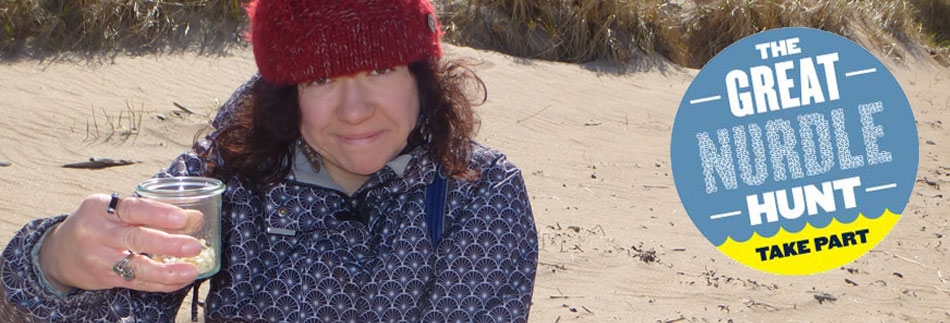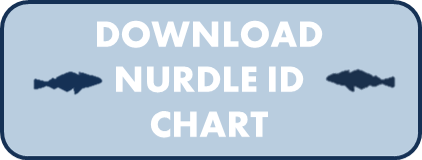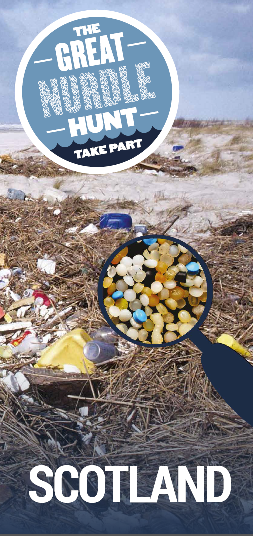It is a tricky business hunting for nurdles!
Coastal geography, tides, currents, and wind mean floating plastic nurdles get washed up on different beaches at different times. Small and lightweight they are blown around and once on land eventually get caught in sheltered nooks and crannies.
WHERE TO LOOK
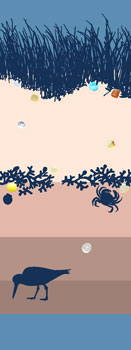 Amongst other plastic:
Amongst other plastic:
The best place to start your hunt is amongst accumulations of small pieces of plastic above the tide line
Paths:
Look on sheltered tracks and paths at the edge of the beach.
Vegetation:
Blown on shore from the sea they get caught in the base of the grasses at the top of the beach.
Strand line:
The sea washes them up to the high tide mark where they get trapped in the strand line debris.
Sandy Beach:
It is easier to hunt on sandy rather than stony or pebbly beaches
Headlands:
Beach litter often accumulates near the headlands of bays.
Un-cleaned beaches:
In the summer some popular beaches are mechanically cleaned. Avoid these areas.
KNOW YOUR NURDLES
Nurdles are hard to spot! They are very small and their colour often blends in with the sand, so on your hunt slow down and get close to the ground.
Colour:
Most are clear or white but they become yellow over time. You do get coloured pellets too.
Size and Shape:
Between 3-5mm in diameter, often shaped like a lentil.

RED HERRINGS... 
***NEW*** Download our NURDLE ID Chart to help separate true nurdles from other beach debris! In particular, little pellets called biobeads are VERY similar to nurdles, but are used in a very different way. These plastic beads, often black-grey and wrinkly or ridged in appearance, are used as an aeration aid in water treatment. We'd like to know where you find these pellets - we know lots are found on the south coast of England for example, but none have been spotted in Scotland....
COLLECTING NURDLES
An old jam jar is ideal for collecting nurdles and showing them off to your friends.

Please remember that nurdles absorb toxic pollutants from the ocean. If you want to collect them, we recommend the use of gloves or a pair of tweezers. Also remember to wash your hands with soap and water thoroughly after touching beach debris.
SHARE YOUR FINDINGS
Your findings are really important; we need to collect evidence to show the local plastics industry the extent of the pollution.
Where did you find nurdles?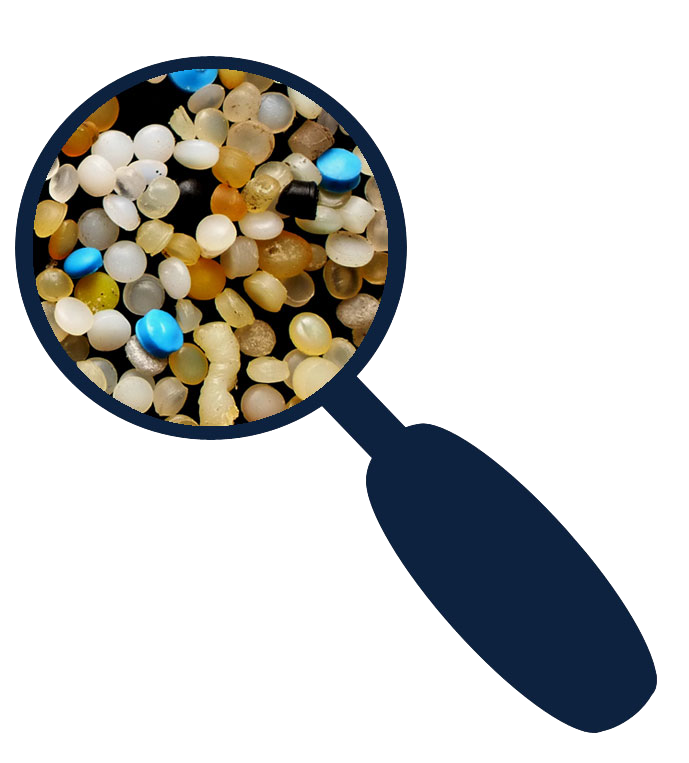
How many nurdles did you find?
How long were you hunting?
If you can - take a picture of the nurdles and the beach where you found them and upload them on line. Click here to find out how to report your nurdle
